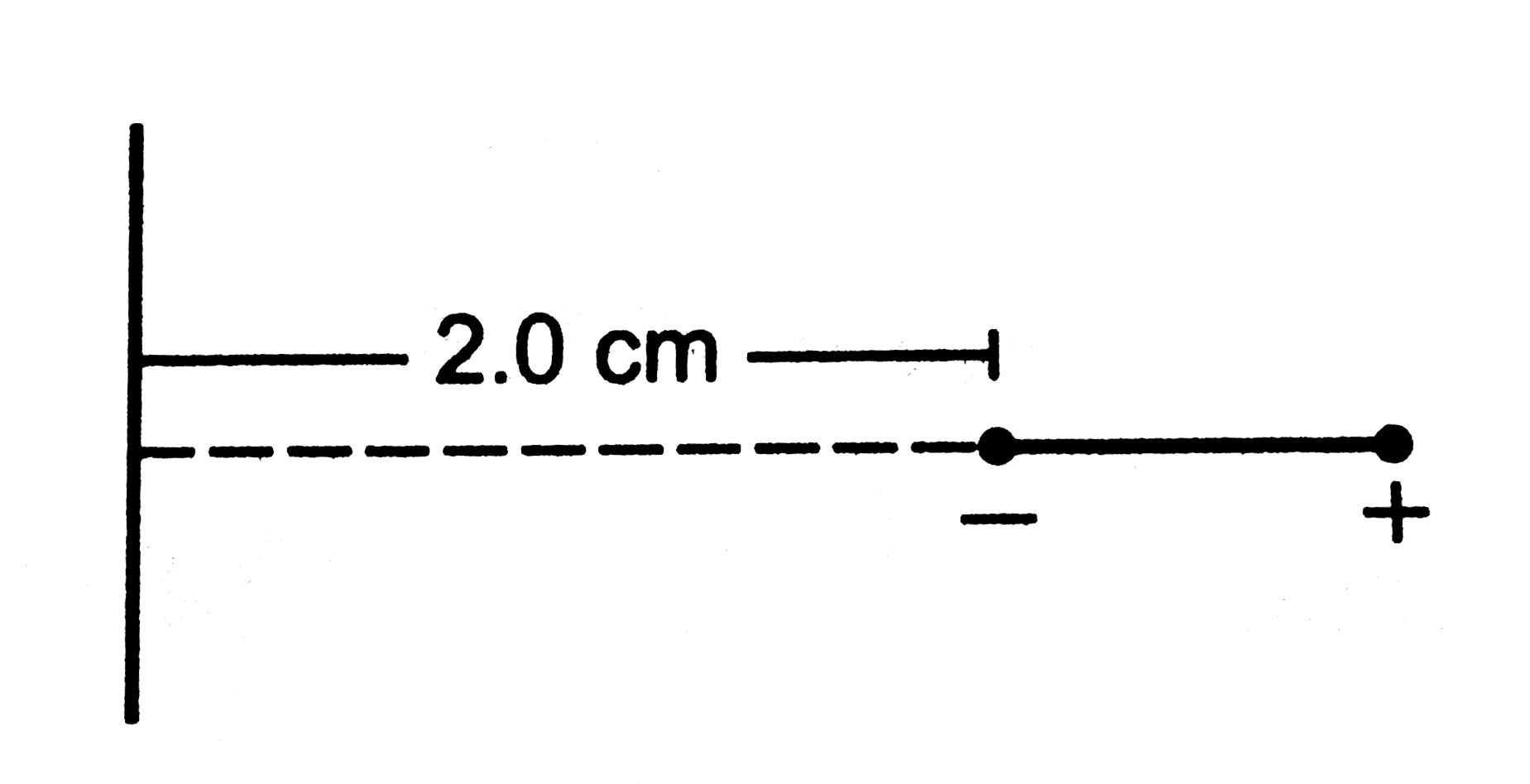An electrical charge 2×10−8 C is placed at the point (1,2,4) m. At the point (4,2,0)m, the electric
potential will be 36 V
field will along y-axis
field will increase if the space between the points is filled with a dielectric
All of the above
The correct Answer is:A
To solve the problem, we need to find the electric potential and electric field at the point (4, 2, 0) m due to a point charge of 2×10−8 C located at (1, 2, 4) m.
Step 1: Identify the position vectors
Let r1=(1,2,4) m be the position of the charge and r2=(4,2,0) m be the point where we want to find the electric potential and electric field.
Step 2: Calculate the position vector r
The position vector r from the charge to the point is given by:
r=r2−r1=(4−1)^i+(2−2)^j+(0−4)^k=3^i+0^j−4^k
Thus, r=3^i−4^k.
Step 3: Calculate the magnitude of r
The magnitude of r is given by:
|r|=√(3)2+(0)2+(−4)2=√9+0+16=√25=5 m
Step 4: Calculate the unit vector ^r
The unit vector ^r in the direction of r is given by:
^r=r|r|=3^i−4^k5=35^i+0^j−45^k
Step 5: Calculate the electric potential V
The electric potential V due to a point charge is given by:
V=kQ|r|
where k=9×109N m2/C2 and Q=2×10−8C.
Substituting the values:
V=9×1092×10−85=9×109×25×10−8=36V
Step 6: Calculate the electric field E
The electric field E due to a point charge is given by:
E=kQ|r|2^r
Substituting the values:
E=9×1092×10−852^r=9×1092×10−825^r
Calculating 2×10−825=8×10−10:
E=9×109×8×10−10^r=7.2^rN/C
Now substituting ^r=35^i−45^k:
E=7.2(35^i−45^k)=4.32^i−5.76^kN/C
Final Answers
- Electric Potential V=36V
- Electric Field E=4.32^i−5.76^kN/C
Let r1=(1,2,4) m be the position of the charge and r2=(4,2,0) m be the point where we want to find the electric potential and electric field.
The position vector r from the charge to the point is given by:
r=r2−r1=(4−1)^i+(2−2)^j+(0−4)^k=3^i+0^j−4^k
Thus, r=3^i−4^k.
The magnitude of r is given by:
|r|=√(3)2+(0)2+(−4)2=√9+0+16=√25=5 m
The unit vector ^r in the direction of r is given by:
^r=r|r|=3^i−4^k5=35^i+0^j−45^k
The electric potential V due to a point charge is given by:
V=kQ|r|
where k=9×109N m2/C2 and Q=2×10−8C.
Substituting the values:
V=9×1092×10−85=9×109×25×10−8=36V
The electric field E due to a point charge is given by:
E=kQ|r|2^r
Substituting the values:
E=9×1092×10−852^r=9×1092×10−825^r
Calculating 2×10−825=8×10−10:
E=9×109×8×10−10^r=7.2^rN/C
Now substituting ^r=35^i−45^k:
E=7.2(35^i−45^k)=4.32^i−5.76^kN/C
- Electric Potential V=36V
- Electric Field E=4.32^i−5.76^kN/C
Topper's Solved these Questions
- ELECTROSTATICSBOOK - DC PANDEY ENGLISHCHAPTER - ELECTROSTATICSEXERCISE - Level 1 Subjective
15 Videos
- ELECTROSTATICSBOOK - DC PANDEY ENGLISHCHAPTER - ELECTROSTATICSEXERCISE - SUBJECTIVE_TYPE
6 Videos
- ELECTROSTATICSBOOK - DC PANDEY ENGLISHCHAPTER - ELECTROSTATICSEXERCISE - Level 1 Assertion And Reason
19 Videos
- ELECTROSTATIC POTENTIAL AND CAPACITORSBOOK - DC PANDEY ENGLISHCHAPTER - ELECTROSTATIC POTENTIAL AND CAPACITORSEXERCISE - (C) Chapter exercises
50 Videos
- GRAVITATIONBOOK - DC PANDEY ENGLISHCHAPTER - GRAVITATIONEXERCISE - All Questions
135 Videos
Similar Questions
An electric charge 2×10−8C is placed at the point (1,2,4). At the point (3,2,1) , the electric
(i) potential will be 50V
(ii) field will have no Y-component
(iii) field will increase by a factor K if the space between the points is filled with a dielectric of constant K
(iv) field will be along Y-axis
View SolutionAn electric charge 10−8C is placed at the point (4m, 7m, 2m). At the point (1m, 3m, 2m), the electric :
View SolutionAs charge q=1μC is placed at point (1m,2m,4m). Find the electric field at point P(0,−4m,3m)
View SolutionA charge q=(−2×10−9) is placed at (1 m, 2m, 3m). There is a point P=(2m,−3m,4m)
A unit vector in the direction of electric field at P due to charge q will be
View SolutionA charge q=−2.0μC is placed at origin. Find the electric field at (3m,4m,0).
View SolutionA charge q=(−2x10−9) is placed at (1 m, 2m, 3m). There is a point P=(2m,−3m,4m)
Component of electric field along x-axis at point would be
View SolutionA charge q=−2.0μC is placed at origin. Find the electric field at (3m,4m,0).
View SolutionIf the force exerted by an electric dipole on a charge q at distance of 1 m is F, the force at a point 2 m away in the same direction will be
View SolutionTwo charges +3.2×10−19Cand−3.2×10−19C placed at 2.4A∘ apart form an electric dipole. It is placed in a uniform electric field of intensity 4×105 volt/m. The electric dipole- moment is
View SolutionAn electric dipole consists of charges ±2.0×10−8C separated by a distance of 2.0×10−3 m. It is placed near a long line charge of linear charge density 4.0×10−4Cm−1 as shown in figure (30-W4), Such that the negative charge is at a distance of 2.0 cm from the line charge. Find the force acting on the dipole.

View Solution
